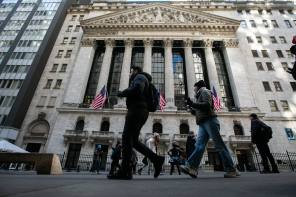
October has seen global equities continue on their downward path from the highs reached earlier this year.
Equity markets were severely affected by the volatility around China over August, when the devaluation of the renminbi led to a broad sell off of emerging market assets and negative sentiment spilled over into developed markets. Broader fears over China have affected emerging markets more directly, with many questioning whether China can continue to drive the resource-focused growth of many of these counties. More recently, the Federal Reserve Bank’s decision not to raise rates in September was also blamed for market volatility, with its caution over China seemingly having crystallised concerns around the country and the durability of the US recovery.
Rebalancing act
While we might have expected volatility to be amplified by low liquidity during thin markets across the August holiday period, equity markets continue to suffer from an uncertain backdrop. In this context, what are the prospects for global equities? While I think China is slowing, I think there are significant potential for equities that still offer the best returns relative to other asset classes. However, investors have to be careful about how they access the asset class and, in particular, pay close attention to the regional weighting of their portfolios.
Although the Chinese market has fallen from its highs back in June, it is still only back to levels seen at the beginning of the year. But a similar fall in the FTSE would have taken us back to the levels seen in July 2009. What this shows is that China’s stock market is highly volatile, and we should not assume that the scale of the collapse in Chinese equities will lead to
a similar reaction in the country’s economy.
While the pace of China’s slowdown has brought some unwelcome surprises, investors should remember that this is all part of the necessary rebalancing of the economy and that the transition to a more sustainable, consumption-driven model of growth has been under way for some time. Although the manufacturing and export sectors are struggling, the country’s service sector continues to expand and now accounts for approximately half of Chinese GDP.
Ultimately, fears over China may be due to its role in sustaining global growth over the past five years. China is undoubtedly an increasingly important part of the world economy, but the US and Europe individually account for a larger share of economic output and are capable of driving growth. In order for worries over China to be validated, I think we would need to see a significant downturn in developed markets data. At the same time, investors are sitting on healthy gains since the financial crisis and it may be that they want to take those gains at the first sign of trouble rather than ride out any volatility. Therefore future returns will be harder to accrue than over the past five years.
Low inflation
From a fundamental perspective, the low growth/low inflation paradigm remains and is broadly supportive of equities. As the Fed did not raise interest rates in September, the timeline for liftoff, which may have now been pushed into 2016, should also help.
The key risk is the evolution of earnings forecasts, and we will watch the upcoming earnings season with great interest. While the Fed looks to be holding off on tightening monetary policy for now, the ECB and the Bank of Japan seem willing to extend their quantitative easing programmes. This should help to support equity markets in both regions.
Although Japanese exporters could be badly affected by a serious slowdown in China, recent falls in commodity prices help the country as it is a net importer.
Japanese equities should also benefit from the determination of the reformist prime minister, Shinzo Abe, to lift the growth rate of the economy. But even without this, technical factors such as a more shareholder-friendly culture, increased dividend payout ratios and further equity allocation from government pension plans could prove strong enough to drive Japanese equities.
Across Europe, we now see growth in the periphery and the core of the eurozone, and the economic recovery looks as though it has the potential to become further entrenched. The region continues to benefit from the three tailwinds of low inflation, a weak currency and loose monetary policy and, while these may fade as we head into 2016, the ability of a strengthening euro to lower inflation or the ECB to keep monetary policy loose should ensure that the region continues to benefit from at least some structural help. European equities are also relatively cheap compared to their US counterparts, which is important given the concerns around the still high valuations of US equities and their potential to offer strong growth in the near future.
However, in the context of more volatile markets, investors need to be cautious about how they achieve their equity exposure and, in this respect, active management matters. Active managers with strong stock-picking skills can conduct detailed research and analysis to ensure investors hold robust companies that can withstand short-term volatility. They can also seek to turn market volatility to an investor’s advantage, adding to economically sensitive stocks when appropriate and benefiting from good buying opportunities.
Of course, equities are not the only game in town. Investors can help mitigate volatility in their portfolios over the longer term by diversifying their investments across a broad range of asset classes, using multi-asset portfolios to spread risk even further.
While we have seen equity markets fall in recent weeks, bonds have performed relatively well, and the traditionally negative correlation between these asset classes can help to protect a portfolio from volatility.
Nick Peters is portfolio manager of Fidelity Solutions
Key points
Equity markets were severely affected by the volatility around China over August
Investors should remember that the China slowdown is all part of the necessary rebalancing of the economy
The low growth/low inflation paradigm remains and is broadly supportive of equities



